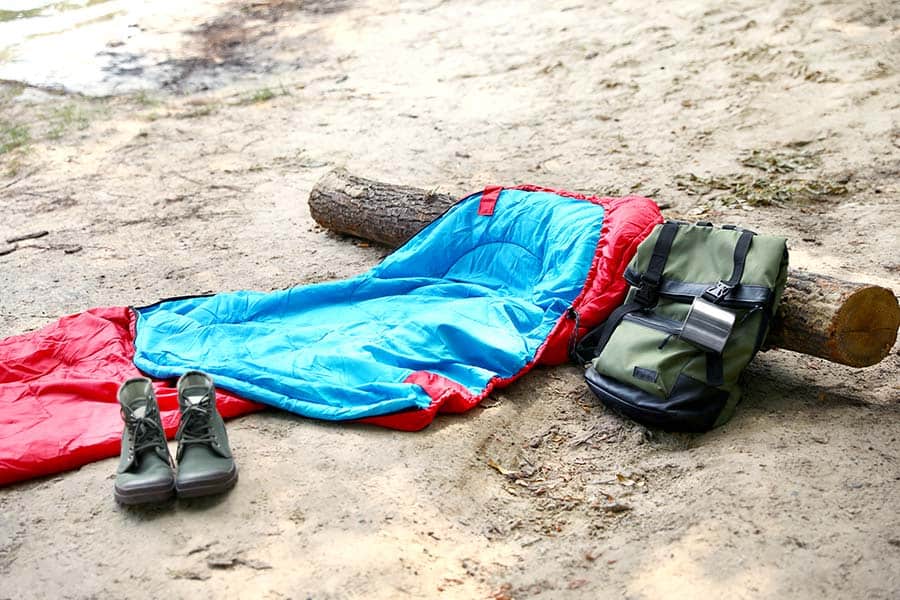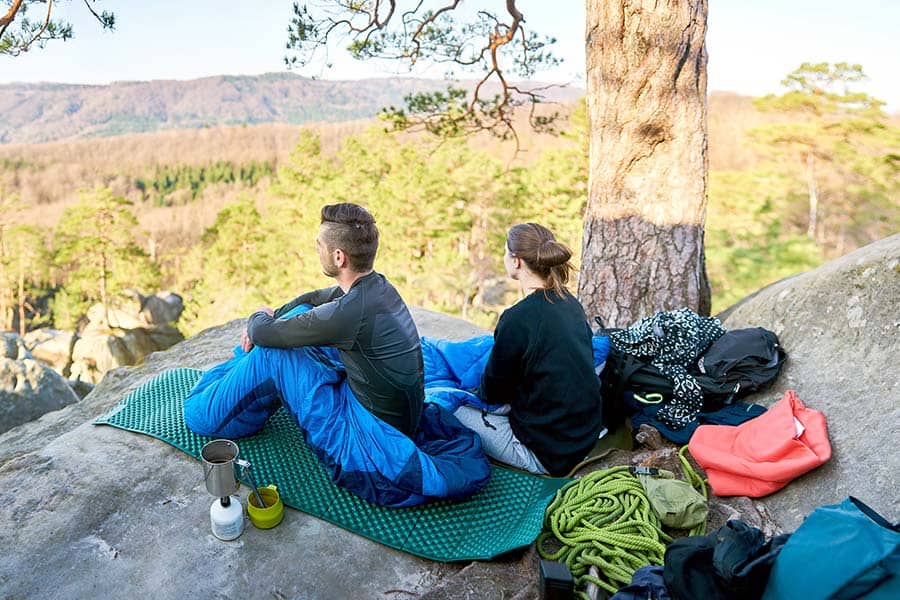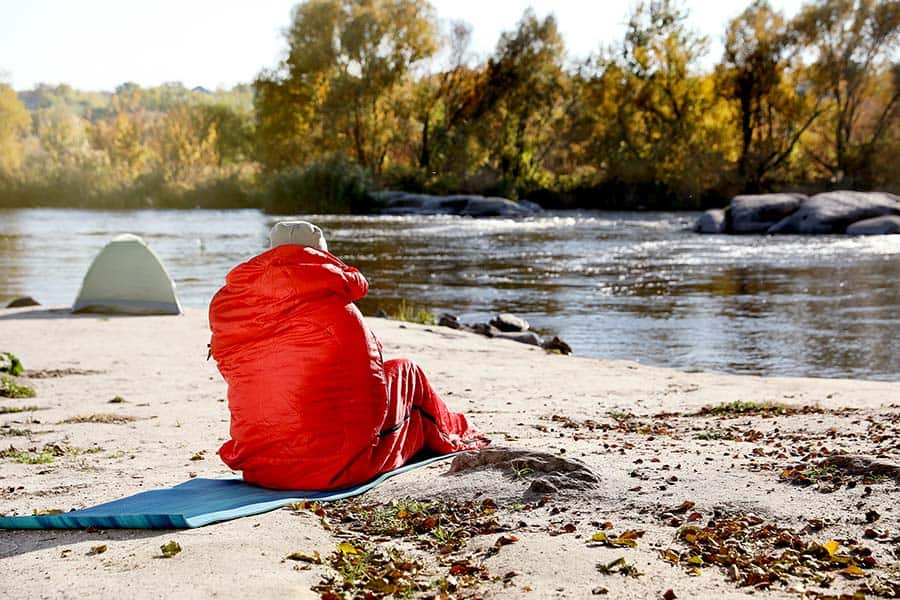
Whether you are a seasoned camper or just getting started, choosing the right sleeping bag is essential to having an enjoyable and comfortable camping experience.
A down sleeping bag is better for warmth; it will keep you warmer than a synthetic one, but they cost more. A synthetic option tends to be more durable and better for wet conditions; however, they do not compress as well. The one you ultimately choose will depend on your specific camping needs.
There are two main types of sleeping bags: down and synthetic insulation. Each has advantages and disadvantages, so it’s essential to consider your needs before deciding.
Down or Synthetic Sleeping Bag – Which Is Right For You?
Let’s take a look at some of the differences between down and synthetic sleeping bags.
Weight & Compression: Down sleeping bags are typically lighter than synthetics, making them easier to transport when camping or backpacking.

Down also compresses much more than synthetics, meaning that down sleeping bags can be packed into small spaces for easy storage or transportation. Synthetic insulation does not compress as much as down but is still lightweight enough for most camping trips.
Durability & Water Resistance: Down insulation is not water-resistant like synthetic insulation, so if camping in wet conditions, opt for a synthetic sleeping bag instead.
Synthetic insulation also tends to be more durable than down, so it may be a better option if you plan on using your sleeping bag frequently. However, if you take proper care of your down sleeping bag, it can last for many years with no problem.
Price Point: Down sleeping bags tend to cost more than their synthetic counterparts due to their higher quality materials and construction methods. If price is an issue, then a synthetic bag will typically give you the most bang for your buck, though there are some excellent value-priced down options out there as well.
Van Camping Life Tip: Always pack extra layers when camping, even if the forecast is for warm weather. Temperatures can drop significantly during the night, so having additional layers available will ensure you stay cozy and comfortable throughout your trip.
Other Posts of Interest:
- Camping In National Parks In The Off-Season +Tips
- What Vans Can You Stand Up In?
- 11 Best Camping Spots for Stargazing in the US
- The 8 Best Vans You Can Camp In
Temperature Ratings: Temperature ratings vary between both types of sleeping bags, but generally speaking, down will keep you warmer than synthetics since it traps body heat better than other materials.

Furthermore, many high-quality down models offer additional features such as draft tubes, hoods, and foot boxes, which all help trap heat around your body even better than regular fillings would do alone.
Synthetic models also provide good warmth but often lack these extra features, which make them less efficient at trapping heat inside the bag where it’s needed most during cold weather camping trips.
Tips for Sleeping
Getting a good night’s sleep in a sleeping bag can be tricky since sleeping bags are not designed for extra comfort. However, to ensure you get the restful sleep you deserve, here are some tips that may help.
First, use sleeping bags specifically designed for camping or sleeping outdoors, as this will usually provide the best insulation and most suitable temperature control options.

Additionally, once you find a sleeping surface (like the ground), make sure it’s level; this will help prevent back or neck pain during or after your slumber.
Next, choose a sleeping bag made of comfortable materials that won’t irritate your skin. Finally, layer up on clothing at night if it’s cold out to minimize heat loss – but don’t overdress, as this can make you too hot.
Following these simple tips should help you get more comfortable while sleeping in a sleeping bag and achieve a good night’s rest!
Time To Get Some Zs
When deciding which type of sleeping bag is best for you, consider what kind of climate you’ll be camping in and how much money you want to spend on a new one. Both types have their advantages and disadvantages, so whichever one you ultimately choose should depend on your specific needs as a camper or backpacker.
That said, if money is no object, we recommend going with a high-quality down model with all the extra features, such as draft tubes and hoods, to keep you warm while out in the wild. Good luck!
Related Questions
How Do I Know if My Sleeping Bag Is Too Small? If your sleeping bag is too small, you may feel overly constricted. You should be able to move freely in the bag without feeling cramped or compressed. Additionally, when zipped up, the sleeping bag should reach your chin and provide adequate coverage for your head and torso. Trying out a few different sized bags before making a purchase can help ensure you find the perfect fit.
Can I Use My Sleeping Bag Indoors? Yes, you can use your sleeping bag indoors. However, it is crucial to consider the temperature and comfort level of the environment. Therefore, investing in an indoor-specific sleeping bag may be worthwhile to ensure a comfortable experience.






